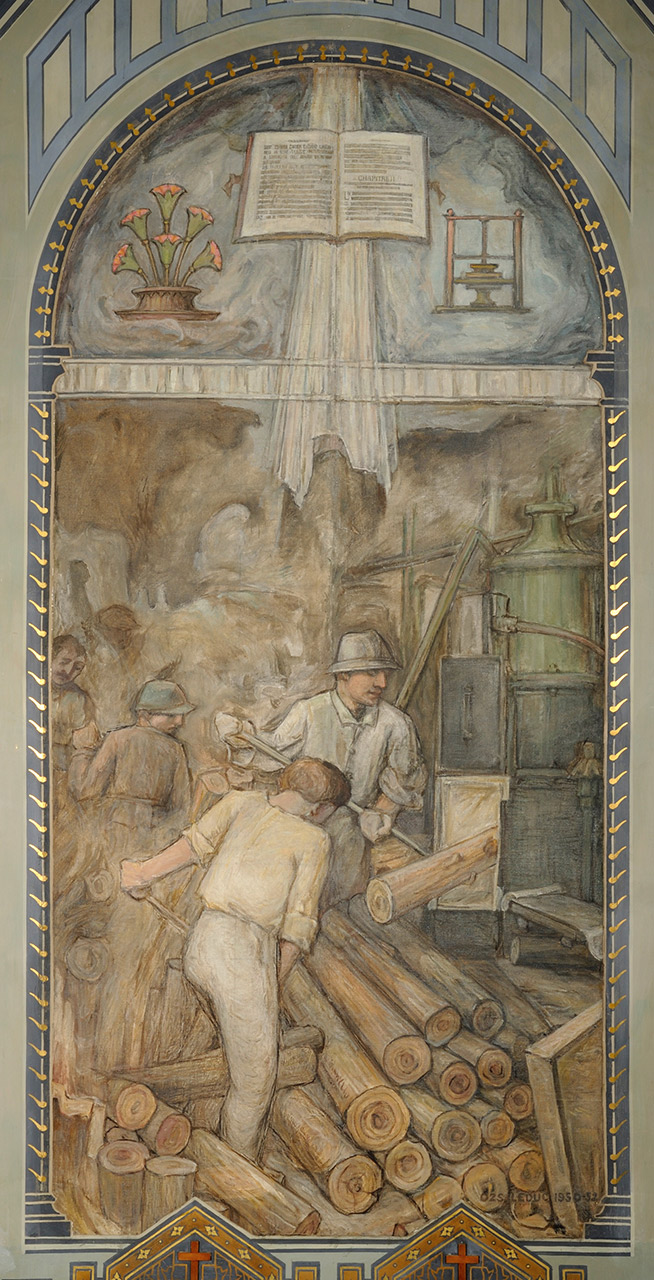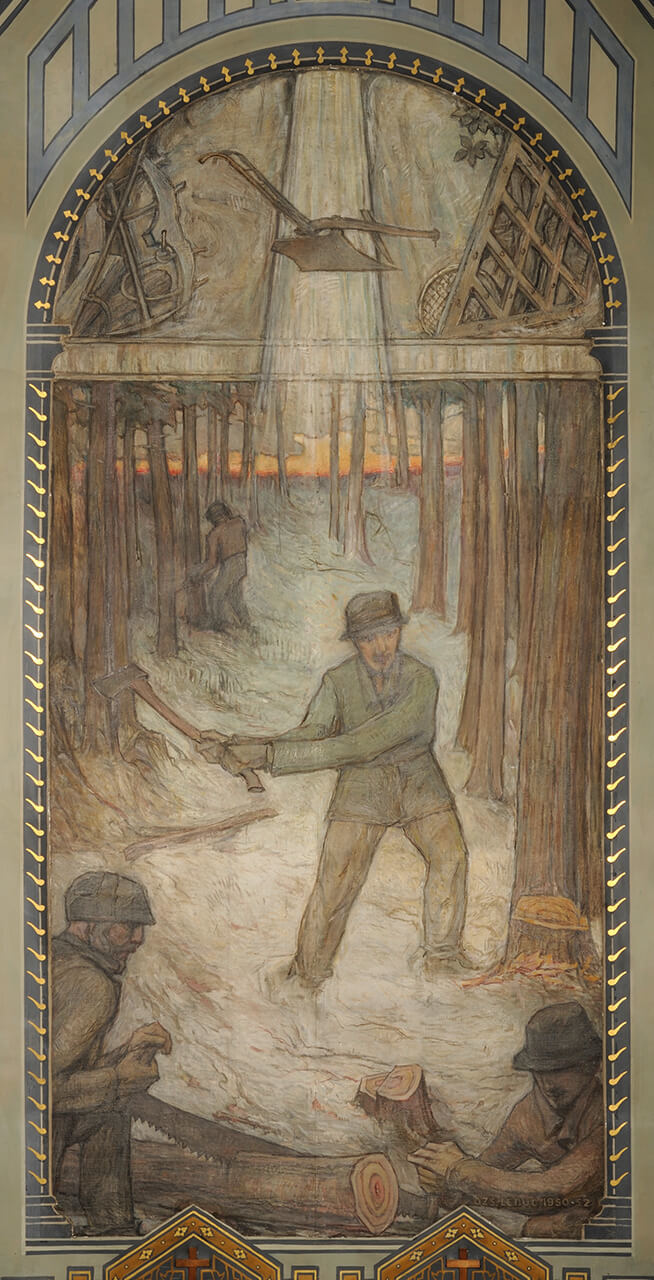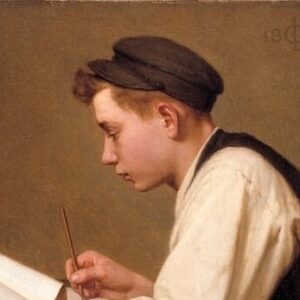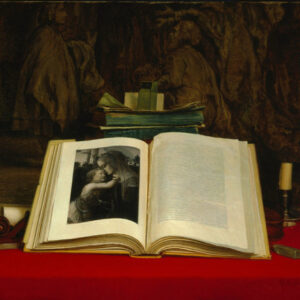The Millworkers c.1950

Ozias Leduc, The Millworkers (Les chargeurs de meules), c.1950
Oil on marouflaged canvas, 370 x 185 cm
Church of Notre-Dame-de-la-Présentation, Shawinigan, Quebec Cultural Heritage
In 1941 a decoration project for the Church of Notre-Dame-de-la-Présentation in Shawinigan offered Leduc an unexpected opportunity. The artist probably had not thought of undertaking such a large painting project again because he had not received a similar commission for seven years and considered his career to be in decline. The commission nevertheless afforded him the chance to give free rein to his creative impulses in the realization of a unified decor, within certain limits. His health, the restrictions imposed by the war (chiefly the difficulty of obtaining materials), the large size of the building site, and the reduced material resources of the parish were all constraints on the undertaking.
The building was modest, in the form of a rectangle with angled corners, extended by the choir, which was also rectangular but narrower. The iconographic program was planned to accommodate the arrangement of the windows and the beams that ornamented the vault. There were to be thirteen paintings and caryatid angels at the joists.
The subjects treated in the paintings were chosen according to their placement in the church. Leduc conceived a program that combines the foundation of Christianity, the Trinity and the Sacrifice of Mass, with contemporary scenes. Ever since Leduc had executed the decor of the Sacré-Coeur Chapel in the Church of Saint-Enfant-Jésus in Mile End between 1917 and 1919, he had been interested in finding a way to represent the subject of salvation through labour, combining images of the founding elements of the Christian faith with scenes of a church congregation. The faith of the parishioners and their daily activities was presented in harmony with the actions of the first missionaries who came to the area to convert the Atikamekw, and with the stages of sin and redemption in the salvation of humanity by Christ’s sacrifice.


For this decor, Leduc proposed an immense painting combining the Holy Trinity, the Offering of Melchizedek, and Abraham’s sacrifice, which cover the apse of the choir and are associated with the celebration of Mass. Two panels representing the Presentation of Mary in the Temple (the tutelary scene of the parish) and the Coronation of the Virgin are placed on either side of the vault of the nave. The angles of the nave are decorated with four scenes from the Old and the New Testament: the temptation of Adam and Eve, the temptation of Jesus in the desert, the Annunciation, and the Holy Family in the workshop at Nazareth. Finally, the walls of the nave hold six paintings; two of them are historical—one depicting Jesuit Father Jacques Buteux at the foot of the Shawinigan Falls, and the other, Buteux falling under the blows of the Iroquois. The remaining four scenes were inspired by the labourers of the region: The Pioneers (Les défricheurs), The Sower (Le semeur), The Millworkers (Les chargeurs de meules), and The Foundry Workers (Les fondeurs de métal).
The millworkers were pulp and paper workers. The Mauricie region is known for its softwood forests that supply the paper mills of the region, including the Belgo mill at Shawinigan. The painting shows how the angled position of the logs hampers the efforts of the workers who lift and feed them into the grindstones of the mill to be pulped. The simplified forms, the contrast between geometric elements and vapours, convey the vigour and force of the work. Images of papyruses, a printing press, and a book overlook the scene and offer a brief history of paper from its origins to its final manifestation.
The steps of the transformation from one condition to another—between reflection and action, shadow and light, damnation and redemption—are at the source of Leduc’s art. He offers an image of the process of transition, through which thought and action slowly lead us to a finished work.

 About the Author
About the Author
 More Online Art Books
More Online Art Books
 Acknowledgements
Acknowledgements